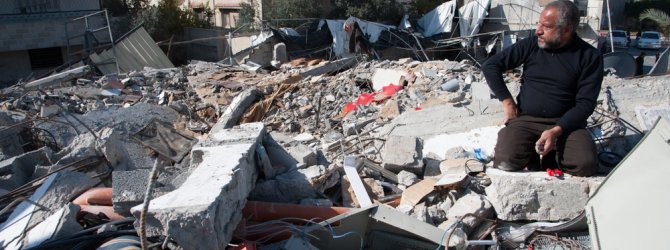-
The Weakness Of Indices: The Deceptive Hibernation Mode ...
The Weakness Of Indices: The Deceptive Hibernation Mode In WANA Will Fool You Again!

Last week, Freedom House celebrated its 75th anniversary of advocating for freedom. I like Freedom House – mostly because I like freedom. Every year, I read their annual report on the status of freedom in the world with interest. Naturally, I focus on their findings in the WANA region. According to their Freedom in the World 2016 Report, the only big change in WANA is that Tunisia now joins the ranks of ‘free’ countries in the least free region in the world. Freedom House concludes that here, it is “regime security over public safety.”
But is this really an accurate depiction of the socio-political developments in WANA? Is this the only change since December 2010? And what does such a conclusion tell us about where this region is headed? Not much, if you ask me. In fact, this type of analysis can be dangerously misleading for policy-makers, and I argue that for constructive forward-thinking policies to form, a comprehensive in-depth analysis of social and political nuances is needed.
Let me outline how the Freedom House index might mislead you about what goes on in this region.
Take a look at the map of freedom in the report. This is exactly what this map looked like in 2010. Out of nowhere – the report in early 2011 was titled ‘The Authoritarian Challenge to Democracy’ – came the second Arab awakening, popularly known as the Arab Spring. The 2015 report was titled ‘Discarding Democracy: Return to the Iron Fist’ – almost an apology for getting it wrong or perhaps Freedom House’s way of saying ‘we give up, democracy just isn’t happening here’.
The pattern is both telling and worrying. WANA was perceived as being dormant in 2010, and we were fooled. Now that the index is back to square one, by trusting it, we again think of the region as in a state of hibernation. Consequently, we are redoing the same mistake and will be caught by surprise when a third Arab awakening happens – and any nuanced in-depth analysis of regional trends suggests it most likely will happen again.
Now take a look at Freedom House’s list of ‘countries to watch’ in 2016. Out of ten countries, only two are WANA states – Iran and Kuwait. I understand Iran’s inclusion given the nuclear deal and the reformist winning the legislative elections. But out of all the Arab countries, why did Freedom House choose Kuwait? Their answer is because “authorities [in Kuwait] are quashing dissent with increasing aggression and frequency, galvanizing concerns about citizenship revocation and use of the death penalty.” That description could easily fit Egypt, Algeria, or Saudi Arabia.
However, to some extent, this is implying that watching Tunisia, which has made remarkable but unconsolidated progress since 2010 and faces some very difficult challenges, is not interesting enough. Or what about Egypt, where the regime is cracking down on freedom on an unprecedented scale?
For comparison, the International Crisis Group listed ten conflicts to watch in 2016. It was based on a qualitative analysis, and Iraq, Syria, Turkey, Afghanistan, Yemen and Libya were all on the list. Now that reflects the region a little better. Essentially fighting a civil war in the Sinai, Egypt should also be on that list – and I say this as a proud Egyptian with a heavy heart.
Of course, you have to give Freedom House some credit. They are trying hard to measure a concept that is inherently subjective. And I recognise that while what Freedom House does has merit, for understanding this region, you need a rigorous analysis of all layers of society. Freedom House is not doing this – an inherent weakness of relying on indices as your only predictor – and consequently, they disregard other qualitative nuances that may lead to more helpful and accurate conclusions.
Alaa al-Aswany wrote that “Egyptians are like camels: they can put up with beatings, humiliation and starvation for a long time but when they rebel they do so suddenly and with a force that is impossible to control.” The fact is that after the so-called Arab Spring, the grievances of protesters, who everyday chose to stand up for their right to a life in dignity, have still not been addressed.
Yet even if the grievances are still the same as they were before December 2010 – and arguably they’re worse in many places – this does not mean that little has changed. There are two important lessons learned. First, people know that civil disobedience works. Second, leaders know that repression works as a mechanism by which to stay in power – whatever the costs; al-Asad is the prime example. This constitutes a lethal combination of two incommensurable factors, and while the grievances function as a catalyst, all we need is a spark to instigate a new Arab Spring on steroids.
So don’t think for a second that we’re back to the same status as before the Arab Spring. Don’t let the region’s deceptive hibernation mode fool you again. It is time to see WANA from where it is and for what it is: a region that urgently needs help to help itself. This will not happen if policy-makers rely on indices; helping this region requires nuanced qualitative analysis and understanding from within.

